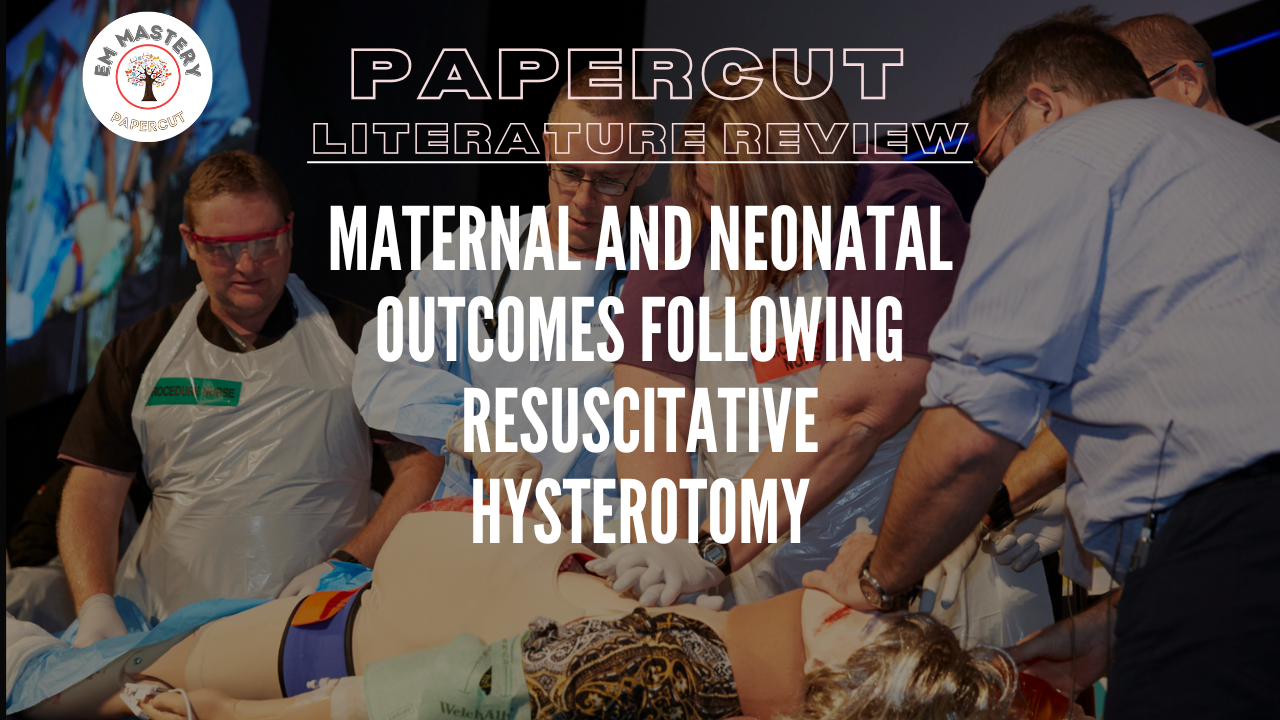
Resuscitative Hysterotomy, previously known as perimortem caesarean section, is performed in patients of > 20 weeks gestation, in cardiac arrest, with no immediate response to resuscitation. Our goal is aortocaval compression release by delivering the uterus, thus improving the chances of survival.
The aetiology of in-hospital versus out-of-hospital cardiac arrest differs, with up to a quarter of inhospital cardiac arrests being due to complications of obstetric anaesthesia and are potentially far more reversible.
This study looked at maternal and neonatal survival rates following resuscitative hysterostomy, with some surprising results.
The Verdict
This study found a low maternal rate of survival(contrary to previous studies) from resuscitative hysterotomy and a higher rate of neonatal survival, even following prolonged resuscitation. Specific variables lead to increased neonatal survival. Will this change your practice given the higher rate of neonatal survival? It will change mine, given that we will never have an RCT on this.
The Study
Leech C et al. Maternal and neonatal outcomes following resuscitative hysterotomy for out of hospital cardiac arrest: A systematic review. Resuscitation 207 (2025)110479
Let’s go deeper…..




